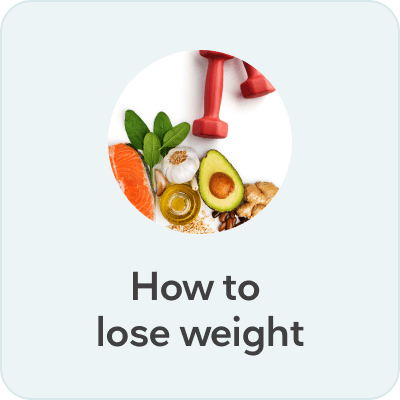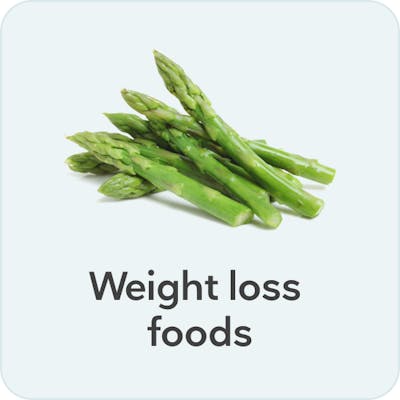Alternate-day fasting: a beginner’s guide
Evidence based
Three key takeaways
Alternate-day fasting is a form of intermittent fasting in which you swap between a day of normal eating and then a day of eating minimal or no calories. Learn moreIt’s easy to do: Rather than restrict calories day after day, which can be hard to sustain, calories are equally reduced over time without feeling as deprived. Find out how
It’s effective: Studies report alternate-day fasting can result in moderate weight loss in a short period of time. Metabolic health can also improve. Here’s why
Interest in intermittent fasting, or intentionally going without food and caloric beverages for a short period of time, has grown tremendously in the past few years. There are several different forms of intermittent fasting regimens, and a popular option is alternate-day fasting.
This guide will provide an overview of alternate-day fasting and explore what the scientific literature says about how it affects weight loss, metabolic health, and cardiovascular blood markers. It’ll also address alternate-day fasting’s safety and provide some practical tips for fasting successfully.


What is alternate-day fasting?
Alternate-day fasting is exactly as its name implies: you alternate fasting days, when you restrict calorie intake, with feasting days when you eat whatever you want, in any amount.1
Fasting days can either be the strict version, when you don’t take in any calories at all, or the modified version, which allows you to consume just 25% of your energy needs, or about 500 calories. Most of the studies done on alternate-day fasting use the modified method, and this is the type I’ll refer to in this guide.2
On fasting days, food can be eaten all at once or as small meals throughout the day.3 Meals can be either high or low in fat, as long as they are less than 500 calories.4 You can make your food from scratch or buy packaged meals that have the calorie content already measured for you. Water, black coffee, unsweetened tea, and sugar-free gum are also allowed in most trials.
When doing a modified fast, foods high in protein and fiber will help you feel less hungry, and soups can fill you up without adding many calories.5
Here are some examples of healthy fasting-day meals that are less than 500 calories:
- 3 to 6 hard-boiled eggs and up to 3 cups of vegetable soup
- 1 to 2 cups of Greek yogurt with a tablespoon of nut butter and up to 1 cup of berries
- Salad topped with 4 to 6 ounces (115 to 170 grams) of grilled fish, chicken, or steak
Although there are no rules on what to eat on a feast day — remember that alternate-day fasting is about when to eat, not what or how much — it is always important to choose high-quality foods with plenty of nutrients for overall health.
Health benefits of alternate-day fasting
Most research on alternate-day fasting in humans has focused on its role in helping weight loss, reducing the risk of metabolic diseases, and affecting cardiovascular indicators. Let’s explore each in detail.
Weight loss
To lose weight, our bodies need to burn more energy than they take in. Often, the first thing people try when they want to lose weight is to cut back on how much they eat at most meals. This is known as caloric restriction.6
The problem with caloric restriction is that people find it hard to stick to because it requires reducing energy intake every day, which can stimulate hunger and cravings.7 In a world filled with around-the-clock availability of delicious, high-calorie foods, it is easy to see why people often fail when trying to diet by eating less every day, day after day.
The part of the weight loss conversation that gets left out is how to create a calorie deficit in a way that feels easier and is sustainable in the long term. Alternate-day fasting can do just that. The idea is that eating significantly less every other day will create enough of a calorie deficit over time to cause weight loss. Even better, you won’t have to eat foods you don’t like, buy expensive supplements, or weigh, track, and measure every bite of food you eat.
Studies report that alternate-day fasting causes moderate weight loss in a relatively short amount of time, resulting in 4% to 8% reductions in body weight in 6 to 12 weeks of alternate-day fasting and a high-carbohydrate diet.8
If you combine alternate-day fasting with a low-carbohydrate diet, even more weight may be lost.9 The rate of weight loss is often similar to what is seen in traditional caloric restriction. It’s significant because as little as a 5% weight reduction can greatly improve health outcomes.10
Furthermore, when research subjects undergoing alternate-day fasting engaged in endurance exercise, they lost more weight — up to twice as much — than alternate-day fasting or exercise alone.11
Losing weight is sometimes the easy part, while keeping the weight off for good can be much trickier. Researchers have tested how much weight is regained when people doing alternate-day fasting no longer receive food and nutritional counseling.
They found that when people were allowed a higher calorie intake on fasting days or fewer fasting days per week, participants experienced mild weight regain of 1% to 2%, which is close to that seen in traditional caloric restriction.12 The study authors noted that people may need to keep up a more rigorous alternate-day fasting protocol to maintain their weight loss.
Body composition is another important factor to consider when losing weight. Ideally, you want to lose body fat, not muscle or lean tissue. Lean tissue helps maintain your resting metabolic rate, meaning that you burn more energy, even at rest.
Research has shown dieters who are alternate-day fasting lose most of their weight as fat and lose just a few ounces of muscle.13 Furthermore, fat reduction occurs mainly in the belly area, where the dangerous internal fat surrounding our organs is most often stored.14 However, the same may not apply to healthy, lean individuals, as one study suggested they lose more lean tissue than fat.15
Metabolic health
Studies suggest that alternate-day fasting may have either minimal, or a slight beneficial effect on fasting glucose and hemoglobin A1c (HbA1c) levels.16 However, studies consistently report that alternate-day fasting reduces fasting insulin and HOMA-IR, a measure of insulin resistance, especially in people with the highest levels of insulin resistance.
Researchers have concluded that alternate-day fasting is more effective than caloric restriction at improving metabolic disease markers in people most at risk of developing diabetes. However, in metabolically healthy adults with obesity, no significant difference was found in metabolic disease markers between subjects doing alternate-day fasting compared to caloric restriction.17
One potential hypothesis from the literature is that the effect of alternate-day fasting on metabolic health may be more pronounced in those with more significant metabolic dysfunction.
Cardiovascular markers
Studies report that alternate-day fasting decreases total cholesterol, low-density lipoprotein cholesterol (LDL-C), triglycerides, and systolic and diastolic blood pressure.18
Researchers have also noted positive impacts on LDL-C particle size. Subjects who exercised while following an alternate-day fasting diet and subjects who did the diet alone had increased LDL particle size after 12 weeks of intervention.19 This is significant because larger LDL particles are associated with less risk of coronary heart disease compared to smaller particles.2021

Is alternate-day fasting safe?
Fasting often gets confused with starvation, but they’re two very different things. Fasting is something you choose to do, with a defined goal in mind, while starvation is an unfortunate situation due to conditions out of your control, such as war or famine.
As long as you aren’t malnourished or underweight, alternate-day fasting appears to be safe, both short and long term. Hunger, irritability, constipation, bad breath, occasional sleep problems, dizziness, and weakness are the most common side effects. Reported symptoms are mild and often go away a couple of weeks after beginning alternate-day fasting.22
Some studies of caloric restriction report that it may weaken immune function in animals23 and decrease bone mineral density in humans, although these are not universal findings.24 In people who had been doing alternate-day fasting on their own for more than six months, no difference was found in bone mass, bone mineral density, white cell counts, or other markers of immune function when compared to people who had never fasted.
Furthermore, there was no evidence that thyroid function had been negatively affected in people doing long-term alternate-day fasting, even though some anecdotal reports suggest this may be an issue with frequent, extended fasting, especially for women.
Even so, certain groups of people likely should not attempt fasting.
This includes
- pregnant and breastfeeding women
- infants and children
- people on insulin or diabetes medications (without a doctor’s supervision)
- people are who are underweight
- elderly people
- people with a history of eating disorders, such as anorexia
As with any dietary change, it’s a good idea to seek medical supervision if you decide to start alternate-day fasting.
4 practical tips for fasting
Try these practical tips to help you successfully implement alternate-day fasting into your health routine.25
- Have a plan
Knowing what and when you are going to eat will help keep you on track when life gets messy. This is especially important for a fasting day: having your food planned and ready to go makes it less likely that you’ll swing by a fast food restaurant on your way home after a busy day. As the saying goes, failing to plan is planning to fail. - Don’t fear salt, and supplement with electrolytes
Sodium, magnesium, potassium, and calcium can be depleted by fasting, regardless of which protocol you choose. You lose even more electrolytes if you are physically active or eat a diet low in carbohydrates and processed foods. Liberally salting your food and supplementing with electrolyte drops, powders, or pills can help make sure you don’t become deficient in these important nutrients. Or try Diet Doctor’s electrolyte elixir, which can be drunk on fasting or eating days. - Become fat adapted
When you’re metabolically flexible, your body can tap into its stored fat for energy, meaning you can go for longer periods without feeling hungry. While the act of fasting itself improves fat adaptation, following a low-carbohydrate, ketogenic-style diet is a great way to prepare your body for fasting. - Stay busy
Fasting is easier when you have something productive to do to occupy your mind and body. It’s tempting to break your fast if you’re bored and hungry. This would be a great time to take a long walk, tackle a challenging puzzle, or do whatever hobby keeps you mentally and physically occupied.
Summary
Alternate-day fasting is an alternative to traditional caloric restriction that shows promise to help you lose weight, improve your metabolic health, and positively affect your cardiovascular blood markers. It can be easier to do than the usual recommendation of eating less all the time because you only need to reduce your energy intake every other day.
Other than a few minor side effects, alternate-day fasting is safe for most people. It is certainly worth a try if you’ve struggled with different ways of dieting in the past.
Alternate-day fasting: a beginner’s guide - the evidence
This guide is written by Jada Rankin, RD and was last updated on June 19, 2025. It was medically reviewed by Dr. Bret Scher, MD on January 20, 2022.
The guide contains scientific references. You can find these in the notes throughout the text, and click the links to read the peer-reviewed scientific papers. When appropriate we include a grading of the strength of the evidence, with a link to our policy on this. Our evidence-based guides are updated at least once per year to reflect and reference the latest science on the topic.
All our evidence-based health guides are written or reviewed by medical doctors who are experts on the topic. To stay unbiased we show no ads, sell no physical products, and take no money from the industry. We're fully funded by the people, via an optional membership. Most information at Diet Doctor is free forever.
Read more about our policies and work with evidence-based guides, nutritional controversies, our editorial team, and our medical review board.
Should you find any inaccuracy in this guide, please email andreas@dietdoctor.com.
Journal of the American Medical Association Internal Medicine 2017: Effect of alternate-day fasting on weight loss, weight maintenance, and cardioprotection among metabolically healthy obese adults: [randomized controlled trial; moderate evidence] ↩
Although people eat up to 500 calories on the modified-fasting days, many believe this has similar effects as complete fasting. That is likely true most of the time, but the makeup of the 500 calories may make a difference. Eating 500 calories of cookies and candy is not the same as 500 calories of fibrous veggies and nuts. For the sake of this guide, we will assume reasonable, healthy choices for the allowed 500 calories. ↩
Obesity (Silver Spring) 2014: Meal timing during alternate-day fasting: Impact on body weight and cardiovascular disease risk in obese adults. [randomized controlled trial; moderate evidence] ↩
Metabolism 2013: Alternate day fasting (ADF) with a high-fat diet produces similar weight loss and cardio-protection as alternate-day fasting with a low-fat diet [randomized controlled trial; moderate evidence] ↩
This is based on the consistent clinical experience of practitioners familiar with intermittent fasting. [weak evidence] ↩
This is based on the consistent clinical experience of practitioners familiar with intermittent fasting. Circulation 2014: AHA/ACC/TOS guideline for the management of overweight and obesity in adults: a report of the American College of Cardiology/American Heart Association Task Force on Practice Guidelines and The Obesity Society.[expert review; ungraded] ↩
Obesity Reviews 2011: Predictors of dropout in weight loss interventions: a systematic review of the literature [systematic review; strong evidence] ↩
Annual Review of Nutrition 2021: Cardiometabolic effects of intermittent fasting[expert review, ungraded]
Frontiers in Nutrition 2020: Health effects of alternate-day fasting in adults: A systematic review and meta-analysis[systematic review of RCTs, strong evidence] ↩
Obesity Science and Practice 2019: Alternate day fasting combined with a low-carbohydrate diet for weight loss, weight maintenance, and metabolic disease risk reduction [Uncontrolled trial; weak evidence] ↩
Progress in Cardiovascular Diseases 2014: Potential benefits of weight loss in coronary heart disease[systematic review; strong evidence] ↩
Obesity (Silver Spring) 2013: Alternate day fasting and endurance exercise combine to reduce body weight and favorably alter plasma lipids in obese humans[randomized controlled trial; moderate evidence] ↩
JAMA Internal Medicine 2017: Effect of alternate-day fasting on weight loss, weight maintenance, and cardioprotection among metabolically healthy obese adults [randomized controlled trial; moderate evidence] ↩
American Journal of Clinical Nutrition 2009: Short-term modified alternate-day fasting: a novel dietary strategy for weight loss and cardioprotection in obese adults [uncontrolled trial; weak evidence] ↩
Cell Metabolism 2019: Alternate day fasting improves physiological and molecular markers of aging in healthy, non-obese humans [randomized controlled trial; moderate evidence] ↩
Science Translational Medicine 2021: A randomized controlled trial to isolate the effects of fasting and energy restriction on weight loss and metabolic health in lean adults [randomized controlled trial; moderate evidence] ↩
Current Nutrition Reports 2021: Effect of various types of intermittent fasting (IF) on weight loss and improvement of diabetic parameters in humans
[overview article; ungraded] ↩Annual Review of Nutrition 2021: Cardiometabolic effects of intermittent fasting [expert review, ungraded]
Clinical Diabetes and Endocrinology 2021: Intermittent fasting: is there a role in the treatment of diabetes? A review of the literature and guide for primary care physicians [systematic review: strong evidence] ↩
Current Nutrition Reports 2021: Effect of various types of intermittent fasting (IF) on weight loss and improvement of diabetic parameters in humans[overview article; ungraded] ↩
Annual Review of Nutrition 2021: Cardiometabolic effects of intermittent fasting [expert review, ungraded]
Clinical Diabetes and Endocrinology 2021: Intermittent fasting: is there a role in the treatment of diabetes? A review of the literature and guide for primary care physicians [systematic review: strong evidence] ↩
PLOS One 2020: Association of small, dense LDL-cholesterol concentration and lipoprotein particle characteristics with coronary heart disease: A systematic review and meta-analysis [meta analysis of observational studies with HR<2, very weak evidence]
Atherosclerosis, Thrombosis, and Vascular Biology 2014: Small dense low-density lipoprotein-cholesterol concentrations predict risk for coronary heart disease
[observational study with HR<2, very weak evidence] ↩European Heart Journal 2007: Cholesterol levels in small LDL particles predict the risk of coronary heart disease in the EPIC-Norfolk prospective population study [observational study with HR<2, very weak evidence] ↩
Nutrition Journal 2015: Safety of alternate day fasting and effect on disordered eating behaviors [uncontrolled trial; weak evidence] ↩
Annual Review of Nutrition 2011: Energy intake and response to infection with influenza [systematic review; strong evidence] ↩
The following study reported reduced bone mineral density with caloric restriction for non-obese individuals. It is not clear if obese indivuduals would have the same response.
Journal of Bone and Mineral Research 2016: Effect of two-year caloric restriction on bone metabolism and bone mineral density in non-obese younger adults: a randomized clinical trial [randomized controlled trial; moderate evidence] ↩
This is based on the consistent clinical experience of practitioners familiar with intermittent fasting. [weak evidence] ↩








